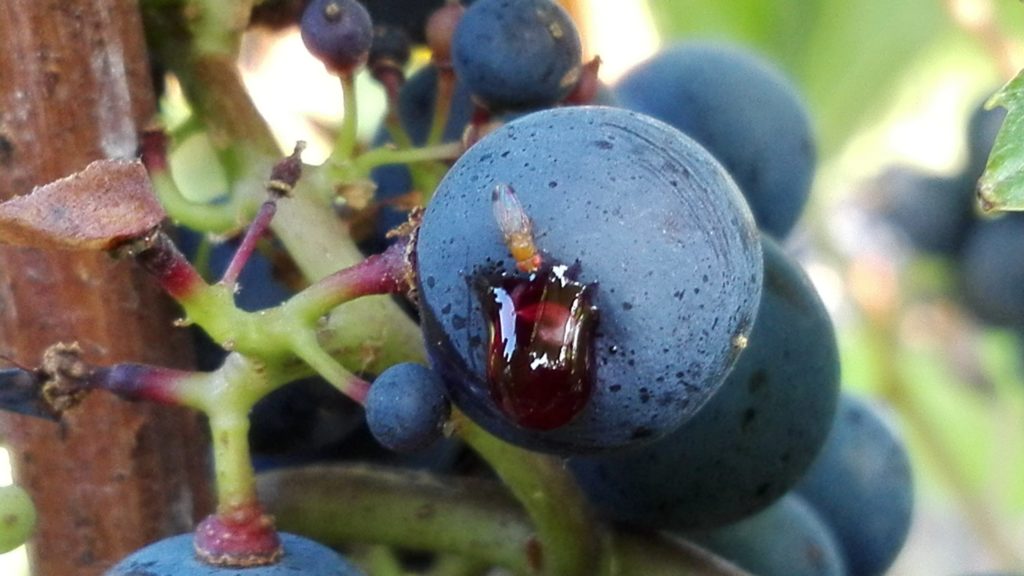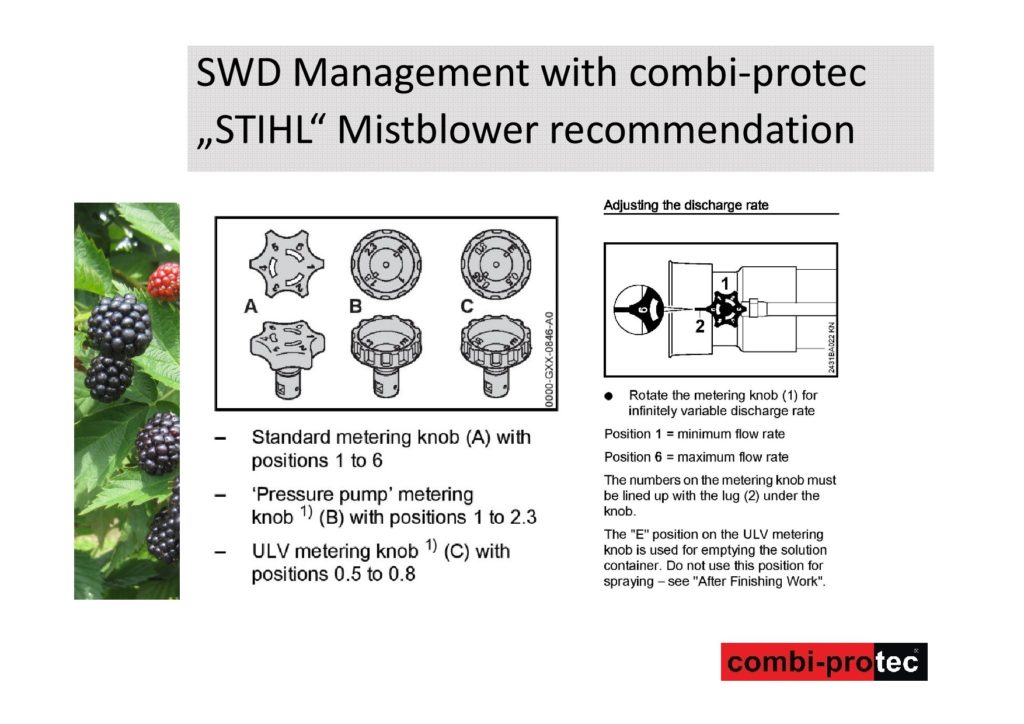To optimize dispersion of bait droplets use recommended Anti Drift Air Injection Nozzles or adapted spray tips.
Blower switched off or on lowest setting:
Any sprayer is suitable for application. For application in soft fruit, two nozzle holders per side are equipped with injector nozzles (preferably IDK 120- 01 (orange)). In very dense stands it is recommended to work with light air support of the blower.
In stone fruit, the bait liquid can be applied with a nozzle as described for soft fruit with slight air support. Alternatively, especially for higher trees, such as Tartcherries or 5 m spindle plants, spray nozzles without air support can be used. For this purpose, an ATR nozzle white or brown (left) is modified by spacer discs (also called shims, see below), which are inserted between the nozzle body and nozzle insert. The spacers have a total thickness of 0.6 mm. Instead of this nozzle, it is also possible to use a metering plate or, if not at hand – injector nozzle metering inserts (suitable here are, among others, the models of Albuz AVI , LECHLER IDK) with an opening from 01 (orange) to 02 (yellow). The spray jet is directed to the top of the tree.
For trees up to 5 m tree height, one modified ATR nozzle per side is sufficient. Depending on the width of the rows, the nozzle is inserted at the bottom of the nozzle holder (in narrow rows, the nozzle can also be crossed, i.e. spraying from the bottom right towards the left tree tip). The spray curtain of bait droplets should be applied over the entire tree if possible.
A combination with injector nozzles directed into the area of the base branches is also possible.


 Deutschland
Deutschland England
England Magyarország
Magyarország Polska
Polska Slovensko
Slovensko Nederlands
Nederlands
































